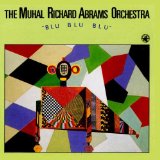Hear keyboardist-composer Muhal Richard Abrams play solo and leading a drummerless quartet tonight, 9/21/2012, at 8 pm at the Community Church or New York (40 E. 35th, between Madison and Park Ave.). It’s the first concert of the season produced by the AACM (Association for the Advancement of Creative Musicians), the 47-year-old organization which he co-founded and has presided over, officially or otherwise.  Now 82, Muhal is a deft herder of cats, a painter of unforeseen visions and an American genius whose works haven’t had a high profile beyond a small though international circle devotees. He’s an outsiders’ insider as a largely self-taught, unconventional artist at the center of a significant musical revolution, and an insiders’ outsider as a special consultant to the highest levels of federal and state cultural administration. There’s no telling what he’ll sound like tonight.
Muhal is scheduled to play synthesizer as well as grand piano, and will feature trumpeter Jack Walrath (most famously a survivor of Mingus’ last bands), vibist Brian Carrott and bassist Brad Jones, both Abrams’ collaborators of long-standing. But fulfilling expectations is usually the  least of Muhal’s concerns, and his audience  generally savors surprise. That’s what “creative music” is all about.
He’s a man capable of improvising pieces that seem through-composed and composing pieces that seem improvised. He is most persistently identified with the “free jazz” avant garde but came up, was mentored by and recorded with mainstream-commercial yet openminded and indeed innovative saxophonist Eddie Harris and he has been commissioned by the Kronos Quartet, among others. Back in the 1960s in Chicago he established strong guiding principles for the only artists-based support-and-production group in any discipline ever to have survived so long, without enforcing any aesthetic doctrine but advancing many unique members to world-wide fame and institutional recognition. From the AACM’s first generation,the Art Ensemble of Chicago (including Roscoe Mitchell, Joseph Jarman, Don Moyé, the late Lester Bowie and Malachi Favors), Henry Threadgill, Anthony Braxton, Wadada Leo Smith, Amina Claudine Myers, George Lewis, Fred Anderson, Thurman Barker, Chico Freeman, Steve and Iqua Colson, Leroy Jenkins, Douglas Ewart, Kalaparusha Ahra Difda, Reggie Nicholson, Pete Cosey, Fred Hopkins, and Steve McCall have made boldly individualistic marks performing and recording (also teaching: Mitchell recently at Mills College, Braxton long at Wesleyan U., Smith at Cal Arts, Lewis at Columbia, Barker at Bard).  He’s been personally available to AACM members and unaffiliated colleagues in NYC, Chicago and elsewhere. St. Louis-connected musicians Oliver Lake, Baikida Carroll, Julius Hemphill, Marty Ehrlich, Hamiet Bluiett and Philip Wilson no less than Nicole Mitchell (now teaching at University of California Irvine), Matana Roberts (in NYC), Brandon Ross and Myra Melford (now teaching at UC Berkeley) as well as still-in-Chicago’s Ernest Dawkins, Ed Wilkerson, Ajaramu, Kahil El-Zabar, Jeff Parker, Mike Reed, Hamid Drake, Ari Brown, Mwata Bowden, Dee Alexander have benefited from Muhal’s leadership and direct or indirect guidance.
Himself a National Endowment of the Arts-designated “Jazz Master,” 2012-named Doctor of Music, honoris causa, of Columbia University and recipient of this year’s BNY Mellon Jazz 2012 Living Legacy Award (to be presented in a ceremony at the Kennedy Center on Friday, October 19, 2012, as well as the first Danish JazzPar Award (in 1990), Muhal has exerted significant behind-the-scenes influence, engaging the ears of the NEA and the New York State Council on the Arts, besides being at the birth of Chicago’s Friends of Duke Ellington Society, which turned into the Jazz Institute of Chicago. But all this speaks only to his credentials and connections, not his productive imagination. My recommendations for must-hear Muhal albums (he’s released more than two dozen under his own name, and many with collaborators including Kenny Dorham, Woody Shaw, Clifford Jordan, Marion Brown, Robin Kenyatta).
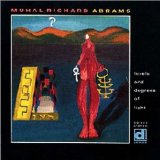 Levels and Degrees of Light — Muhal’s recording debut as a leader, on the eerie title track he plays clarinet to vibes and wordless vocal; “My Thoughts of the Future, Now and Forever” Â feature Braxton and Kalaparusha; there’s a long poem intoned by it’s author David Moore, and originally the mix was too reverberant, but that’s been adjusted — so the music is clearly dramatic, stark and expressionistic.
Levels and Degrees of Light — Muhal’s recording debut as a leader, on the eerie title track he plays clarinet to vibes and wordless vocal; “My Thoughts of the Future, Now and Forever” Â feature Braxton and Kalaparusha; there’s a long poem intoned by it’s author David Moore, and originally the mix was too reverberant, but that’s been adjusted — so the music is clearly dramatic, stark and expressionistic.
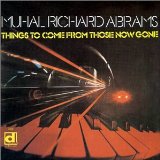 Things to Come from Those Now Gone — Muhal’s third record for Chicago’s Delmark Records is compositionally compact. His second, Young at Heart/Wise in Time is good, but loose and discursive. This one is by turns tuneful, angular and ruminative. No two tracks are alike.
Things to Come from Those Now Gone — Muhal’s third record for Chicago’s Delmark Records is compositionally compact. His second, Young at Heart/Wise in Time is good, but loose and discursive. This one is by turns tuneful, angular and ruminative. No two tracks are alike.
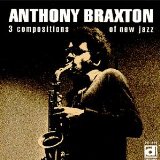 Three Compositions of the New Jazz — Anthony Braxton’s unique system of compositional organization is nascent, but already well-developed, and time becomes suspended during the course of these pieces realized by an ensemble that had no precedent in jazz back in its day: Leo Smith on trumpet, Leroy Jenkins on violin, Muhal on piano.
Three Compositions of the New Jazz — Anthony Braxton’s unique system of compositional organization is nascent, but already well-developed, and time becomes suspended during the course of these pieces realized by an ensemble that had no precedent in jazz back in its day: Leo Smith on trumpet, Leroy Jenkins on violin, Muhal on piano.
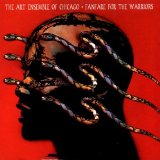 Fanfare for the Warriors –– The Art Ensemble of Chicago was the first AACM band to get a grant (funding this record), the first to leave for Paris, the first to deck itself out in facepaint the better to sell its “show” without compromising it’s “Great Black Music, Ancient to the Future.” Muhal sits in with Bowie, Mitchell, Jarman, Favors and Moyé. We’d never heard them with a pianist before, and Muhal’s approach is a true enhancement.
Fanfare for the Warriors –– The Art Ensemble of Chicago was the first AACM band to get a grant (funding this record), the first to leave for Paris, the first to deck itself out in facepaint the better to sell its “show” without compromising it’s “Great Black Music, Ancient to the Future.” Muhal sits in with Bowie, Mitchell, Jarman, Favors and Moyé. We’d never heard them with a pianist before, and Muhal’s approach is a true enhancement.
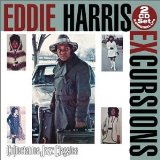 Excursions — Eddie Harris growls through his amplified and processed sax, bells tinkle (that might be Muhal!), and there’s a lot of bluesy, hummable hard-boppish in what was originally a double-lp, meant to sum up all the things Harris and his colleagues could be. Nice reminder that humans can have many faces, and Chicago’s South Side is a font of jams.
Excursions — Eddie Harris growls through his amplified and processed sax, bells tinkle (that might be Muhal!), and there’s a lot of bluesy, hummable hard-boppish in what was originally a double-lp, meant to sum up all the things Harris and his colleagues could be. Nice reminder that humans can have many faces, and Chicago’s South Side is a font of jams.
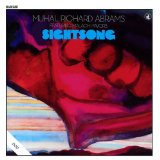 Sightsong —  Malachi Favors Maghoustut was the model of a steady, pliant bassist and Muhal’s part in their improvised duets becomes particularly warm, flush with melody.
Sightsong —  Malachi Favors Maghoustut was the model of a steady, pliant bassist and Muhal’s part in their improvised duets becomes particularly warm, flush with melody.
Blu blu blu — Early in AACM history Muhal convened the Experimental Band, which never recorded. The orchestra on Blu blu blu isn’t that, but as a 12-tet with whistler Joel Brandon and guitarist David Fiuczynski among unexpected soloists shows off Muhal’s larger, Ellington-informed vision.
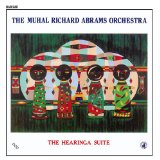 The Hearinga Suite — Another large ensemble work — ambitious and well realized — throughout which Muhal integrates electronic synthesizer, sparingly but effectively.  Exotic sounds abound.
The Hearinga Suite — Another large ensemble work — ambitious and well realized — throughout which Muhal integrates electronic synthesizer, sparingly but effectively.  Exotic sounds abound.
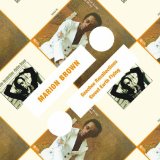 Sweet Earth Flying — Marion Brown was a composer and alto saxophonist with a gift for lyrical tenderness. Muhal was an excellent accompanist for him, credited for piano, electric piano and organ him on Sweet Earth Flying, on which Paul Bley also performs, credited on the same three instruments. SWF has been paired for reissue with Brown’s other recording for Impulse!, GeeGee Recollections (no Muhal, but Leo Smith and Streve McCall). Makes for a treat.
Sweet Earth Flying — Marion Brown was a composer and alto saxophonist with a gift for lyrical tenderness. Muhal was an excellent accompanist for him, credited for piano, electric piano and organ him on Sweet Earth Flying, on which Paul Bley also performs, credited on the same three instruments. SWF has been paired for reissue with Brown’s other recording for Impulse!, GeeGee Recollections (no Muhal, but Leo Smith and Streve McCall). Makes for a treat.
 Streaming — Muhal teams with Roscoe Mitchell (reeds) and George Lewis (trombone and computer) to conjure music of indecipherable scale. It may best be heard, the first few times through, as an unfolding soundtrack, though I couldn’t help wondering what sounds were soft but magnified, which loud but contextualized to seem otherwise. The best approach may be to listen with several perspectives in mind; that seems to be how the music came to be. Challenges whatever you’re used to!
Streaming — Muhal teams with Roscoe Mitchell (reeds) and George Lewis (trombone and computer) to conjure music of indecipherable scale. It may best be heard, the first few times through, as an unfolding soundtrack, though I couldn’t help wondering what sounds were soft but magnified, which loud but contextualized to seem otherwise. The best approach may be to listen with several perspectives in mind; that seems to be how the music came to be. Challenges whatever you’re used to!
All the cover paintings above (except for that on Fanfare for the Warriors) are by Muhal Richard Abrams.

